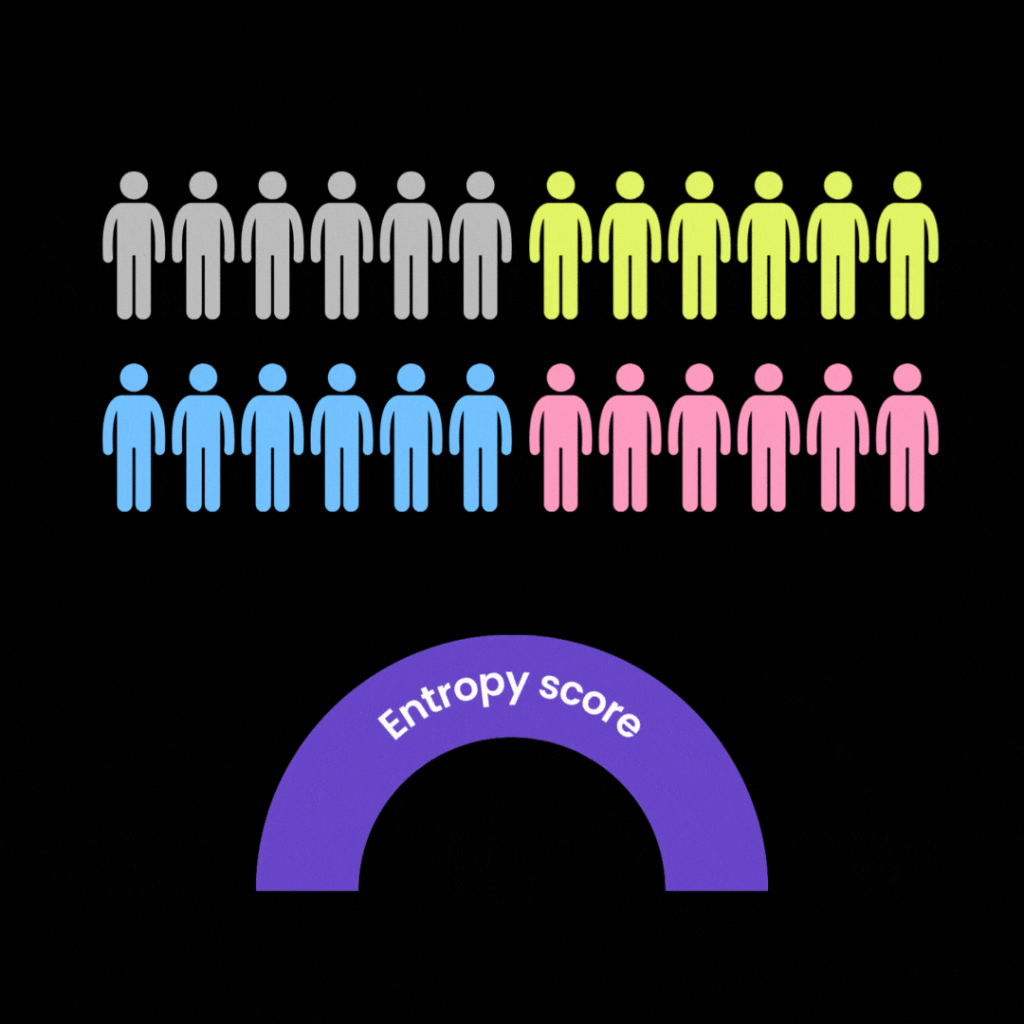Entropy through everyday examples
Entropy is often used as a measure of disorder and is a fundamental concept in thermodynamics. Imagine a perfectly tidy room with everything in the right place and clean. This space has low entropy because everything is highly ordered. Now imagine the same room in disarray, with things scattered everywhere. Entropy is high in this scenario due to the chaos and randomness.
Using this analogy further, entropy can be used to gauge workforce diversity. When the workforce is homogeneous in terms of gender, colour, and ethnicity, entropy is low. On the other hand, your entropy will be high if your staff comprises people from various backgrounds. In the context of statistical mechanics, entropy refers to the level of disorder or unpredictability present in a system.

Applying entropy to workforce diversity
Let’s consider a hypothetical scenario to understand better how entropy can be applied to workforce diversity. Imagine a company with 50 employees, and each employee falls into one of 5 categories of ethnicities: A, B, C, D, E. If there is equitable diversity, each ethnicity would have about ten employees; thus, entropy is higher. If we pick an employee randomly, we would not be able to predict their ethnicity since the probability of selecting an employee from a particular ethnicity is the same across ethnicities. However, if there are 30 employees from “A”, and the remaining 20 are divided among the other ethnicities, there is less diversity in the workforce. It is easier to predict the ethnicity of any given employee since we know there are more employees from “A” in number. Thus, entropy is on the lower end.
Organisations can determine the entropy score for their workforce by gathering pertinent information on employee demographics, including age, gender, sexual orientation, race, disabilities, and cultural background. But it’s essential to remember that diversity also refers to how evenly distributed these various groups are, not just how many of them there are.
Applying the concept of entropy can help companies identify areas where certain groups are underrepresented or overrepresented. This knowledge empowers organisations to take proactive measures to rectify any imbalances, such as implementing targeted recruitment practices, creating mentorship opportunities, and fostering an inclusive work culture that celebrates and values diversity.
By regularly evaluating the workforce composition and entropy score, organisations can assess the impact of their diversity strategies and make adjustments. This iterative process enables companies to continually improve their inclusivity and create an environment where everyone feels valued and heard.
Entropy, when viewed through the lens of workforce diversity, provides a powerful and data-driven way to understand inclusion beyond surface-level representation. It moves the discussion from simply counting how many diverse employees exist to examining how equitably diversity is distributed across levels, teams, and functions. A company with high entropy isn’t just one that has people from varied backgrounds, it’s one where those differences coexist meaningfully and contribute to collective growth.
By calculating and tracking entropy, organisations can uncover hidden inequities in hiring, promotions, or leadership representation. It offers an objective metric that complements qualitative efforts like inclusion surveys or focus groups. More importantly, it encourages accountability, ensuring that diversity isn’t treated as a one-time initiative but as a measurable, evolving commitment.
However, numbers alone don’t drive inclusion. High entropy must be supported by inclusive practices, equitable hiring systems, and workplace cultures that value authenticity and belonging. Without these, even a statistically diverse workforce can feel fragmented and unsupported. When combined thoughtfully, entropy can serve as both a mirror and a guide, helping leaders build workplaces that are not only more diverse but also more dynamic, innovative, and resilient in the face of change.
At Serein, we have helped companies across industries and global geographies to scale diversity practically and achieve productivity gains. Write to us at hello@serein.in.


